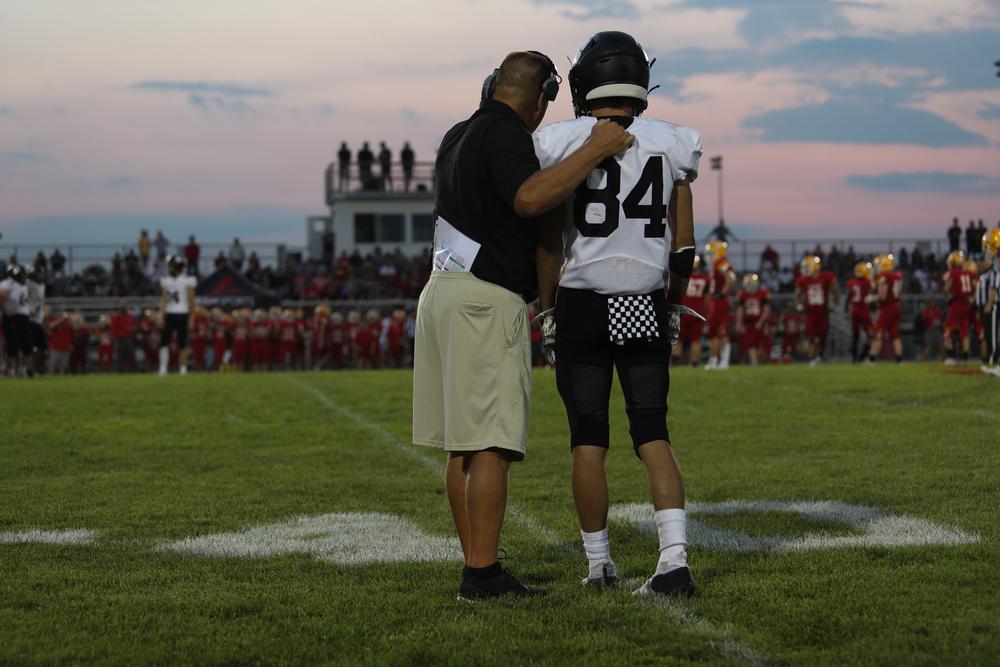Student leadership is difficult. If you’re the captain of a team or in another leadership role, you’re probably tasked with making unpopular decisions, which can lead to resistance from your teammates or your coach. Experiencing resistance as a leader is inevitable and it can actually be an opportunity to hone your leadership skills while creating team buy-in.
Here, board-certified family physician and TrueSport Expert Deborah Gilboa, MD, has seven tips for best handling resistance from your team or your coach.
1. Lead with curiosity
 You know that being a leader doesn’t mean that you make every decision and that your way is the only way. The best way to get your teammates (or your coach) to buy into your ideas is by first listening to their objections—and being open to understanding why they’re objecting.
You know that being a leader doesn’t mean that you make every decision and that your way is the only way. The best way to get your teammates (or your coach) to buy into your ideas is by first listening to their objections—and being open to understanding why they’re objecting.
“Always begin with curiosity,” says Gilboa. Ask questions to better understand why your teammates object to starting practice 15 minutes earlier. You might assume it’s because they want to sleep in, but it could be that one of your teammates has a part-time job early in the morning or needs to watch his younger siblings to make sure they get on the bus.
“We tend to assume, judge, and jump three steps ahead,” Gilboa adds. “You might even be right—but if you don’t find out why your teammates are resisting you, you won’t be able to lead them effectively.” Reflect back their observations and be empathetic to their reality.
2. Present ideas clearly and concisely
When you’re presenting your team with a necessary change, it can still be met with resistance. Gilboa suggests that you start by giving them the information that they need to come to the same conclusion that you came to. “Be transparent and share the facts of the situation before you present your solution,” she says.
For example, if your school recently cut funding for sport teams and the only way to have a men’s and women’s basketball team is to practice and attend the same competitions, present those facts as transparently as possible and give the team the list of possible solutions. Be willing to listen to alternative views and opinions even as you try to steer the team towards your ideal outcome. You can also practice your presentation to ensure the best possible delivery and tone.
3. Give your team time to feel their feelings
Often, resistance is short-lived if you give your teammates the space to vent and complain about something before moving into the solution phase. “If you want to head off resistance in a tricky situation, let the team have their moment to complain,” says Gilboa. “Give people five minutes to feel their feelings and to express what they hate about a situation, because change is hard.” After the timer goes off, shift into problem-solving mode.
4. Remember that it’s not about you
“We often see people’s resistance to change as a referendum on our leadership,” says Gilboa. “When your teammates disagree with you, it’s easy to assume that they don’t like you or respect you as a leader. That’s a natural reflex—but you have to remember that it’s rarely about you.
5. Check on your own resistance
In order to better understand your teammates’ resistance in any situation, notice your own resistance when it comes up. This could be resistance to your coach, a teacher, even your parents. “It’s helpful to understand when you feel resistance against change, because it helps you better empathize with your teammates and understand what they need from you in order to move through their resistance,” says Gilboa. “The more self-knowledge you have, the easier it is to do all of these practices with your teammates and coach.”
6. You won’t always get full buy-in
Even if your teammates do eventually go along with your ideas, there will often still be some element of resistance. But that’s okay, says Gilboa. If you lead with curiosity, ask questions, listen to the answers, and are willing to have your mind changed, you’ll maintain respect with the team and encourage collaboration, even if you don’t come to an agreement or get full buy-in from your teammates.
Remember, leading a team isn’t about being the most popular person, it’s about making decisions that most benefit the team and align with the team’s values.
7. How to deal with resistance from your coach
 Resistance doesn’t just come from teammates: Coaches can be resistant to change and may view your attempts to make changes as disrespect. “There are a lot of older coaches who grew up believing that questioning authority was disrespectful,” says Gilboa. “This can be hard for you as an athlete leader to navigate.”
Resistance doesn’t just come from teammates: Coaches can be resistant to change and may view your attempts to make changes as disrespect. “There are a lot of older coaches who grew up believing that questioning authority was disrespectful,” says Gilboa. “This can be hard for you as an athlete leader to navigate.”
Start by acknowledging your coach’s authority and expertise in these conversations. Try to help them understand that you’re not questioning their authority or trying to undermine them, you’re trying to do what’s right for the team. If your coach is resistant to any changes you recommend, Gilboa recommends asking this question: “Can you help me understand the negative impacts that you see if we were to make this change?”
You may reach a point where a coach simply won’t engage with you or make meaningful change. If you believe there’s a threat to the team or misconduct on their part—bullying, harassment, or purposefully disenfranchising a certain group of athletes on the team—you can escalate the issue by going to your school’s athletic director or administrator.
_______________________
Takeaway
As an athlete and leader, it can be emotionally challenging when your teammates or coach are resisting changes that you’re hoping to make on the team. But if you lead with curiosity and empathy, and actually listen to your teammates, you’ll probably win their respect and make better decisions for the team.



